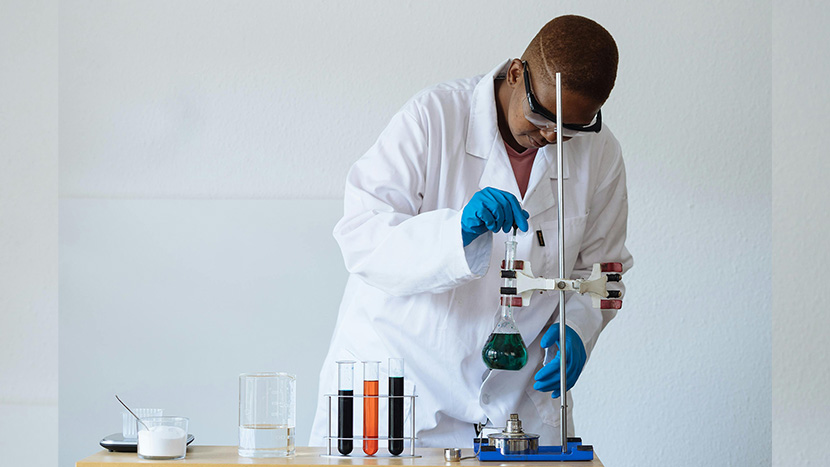The Science Behind Laxatives – How This Medicine Impacts Your Digestive Tract?
Here’s something many people don’t realize: your digestive tract is a surprisingly long and dynamic system, stretching over 30 feet, and its smooth operation relies on much more than just what you eat. Today’s fast-paced lifestyles and unpredictable diets have made digestive issues like constipation increasingly common. And in many households, laxatives have become a go-to remedy. But using them without understanding how they work can lead to confusion or even misuse.
That’s why learning about laxatives—especially how solutions like polyethylene glycol-based MiraLAX function—can empower you to make smarter, safer choices. If you’re curious about Miralax powder dosage for adults and how it fits into your digestive health routine, you’re in the right place. Let’s break it down in a simple, digestible way.

What Are Laxatives, and Why Do They Matter?
At their core, laxatives are medications designed to stimulate or ease bowel movements. They help relieve constipation, a condition where stool becomes hard or difficult to pass. While many associate laxatives with temporary relief, they also play a role in broader wellness routines, especially when digestion slows due to stress, poor diet, medication side effects, or travel.
There are several types of laxatives, including:
- Stimulant laxatives, which activate the muscles in your intestines.
- Bulk-forming laxatives, which add fiber and increase stool mass.
- Stool softeners, which moisten the stool.
- Osmotic laxatives, which draw water into the intestines.
Each has its place, but today we’re focusing on one of the gentlest and most widely used: osmotic laxatives, particularly PEG 3350, the main ingredient in MiraLAX.
How Your Digestive Tract Responds to Laxatives?
Your digestive system is a highly coordinated machine, with food moving through a series of steps—breaking down, absorbing nutrients, and eliminating waste. However, when this flow is interrupted, waste can remain in the colon for too long, becoming dry and difficult to pass.
Laxatives step in to help restore the natural rhythm of this process. Depending on the type, they may stimulate intestinal movement, soften stool, or—in the case of osmotic laxatives—draw water into the colon to ease passage.
When used responsibly, laxatives support digestive comfort without altering the body’s long-term function. The key is understanding how they work and not relying on them too frequently.
The Role of Osmotic Laxatives: A Closer Look at PEG 3350
PEG 3350 (polyethylene glycol) is the active ingredient in many osmotic laxatives, including MiraLAX. It works by drawing water into the colon, which softens stool and makes it easier to pass, without causing sudden urgency or harsh cramping.
Why is PEG 3350 often preferred?
- It’s gentle – It doesn’t stimulate intestinal muscles directly, which reduces the risk of dependency.
- It works gradually – Typically within 1 to 3 days, allowing the body to adjust naturally.
- It’s tasteless and easy to mix, making it suitable for daily or occasional use, especially in powder form.
This gentle water-drawing effect helps maintain normal stool consistency and is particularly helpful for those managing chronic constipation or post-surgical digestive care.
Miralax Powder Dosage for Adults: What You Should Know
When it comes to osmotic laxatives like MiraLAX, using the right dose matters just as much as when you take it. The standard Miralax powder dosage for adults is 17 grams—about one heaping tablespoon of the powder—dissolved in 4 to 8 ounces of liquid, such as water, juice, or tea. This is typically taken once daily.
Here’s what to keep in mind:
- Always follow the package directions or your doctor’s guidance—especially if you’re using it for more than a few days.
- It’s not instant—Unlike stimulant laxatives, MiraLAX takes a day or more to work. Be patient and consistent.
- Don’t exceed the recommended dose—Taking more won’t speed up results and may lead to dehydration or discomfort.
For many, this once-daily regimen provides effective and predictable relief with minimal side effects.
Understanding the Balance—Relief Without Dependency
One of the biggest concerns about using laxatives is the fear of becoming dependent. While some types of laxatives, especially stimulants, can lead to overuse, PEG 3350-based products have a low risk of this because they work through hydration, not muscle stimulation.
Still, moderation is important. If you find yourself needing laxatives regularly, it might be a sign that your diet, hydration, or activity levels need adjustment. Adding more fiber, drinking enough water, and engaging in daily physical activity can all promote natural regularity.
Think of laxatives as a tool, not a daily fix. Used thoughtfully, they can be part of a smart digestive care plan.
Choosing the Right Time and Method for Laxative Use
Not every situation requires a laxative. But if you’re feeling backed up, traveling, or recovering from surgery or medication side effects, they can provide much-needed relief. Here’s how to use them wisely:
- Choose the right day – Since osmotic laxatives work gradually, avoid using them when you’re expecting fast results or need to be on the go.
- Take with food or at a consistent time – Some find it easier to remember if taken with breakfast.
- Stay hydrated – This is essential. Water helps the laxative do its job and prevents cramping.

If you’re integrating MiraLAX or another osmotic laxative into your wellness plan, remember that the goal is gentle, regular bowel support, not total system flushing.
Digestive discomfort can disrupt your entire day, but with the right tools and knowledge, you can stay in control. Products like MiraLAX, when used at the recommended adult dosage, offer gentle and effective relief without the harsh effects associated with other types of laxatives. Just remember, the key to long-term digestive health isn’t just what you take, but how you use it.
Listen to your body, follow the directions carefully, and prioritize habits that support your gut in the long run. By understanding how laxatives impact your system, you’re not only taking care of your digestion—you’re investing in a healthier, more comfortable lifestyle from the inside out.













































































































